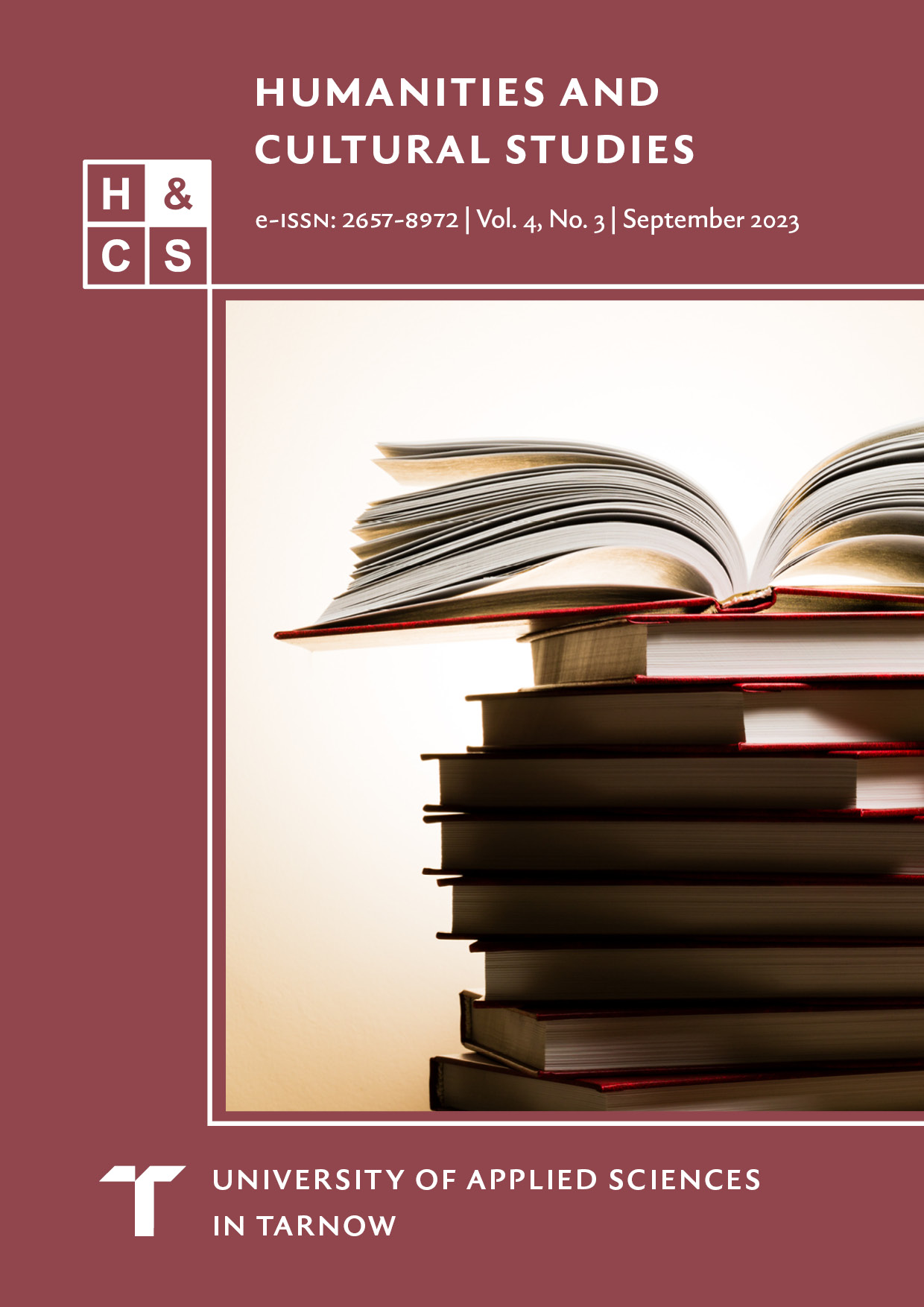Muminki, wyprawa i pielgrzymka — elementy średniowiecznego romansu rycerskiego i staroangielskiej poezji elegijnej jako motywy w książce "Tatuś Muminka i morze"
DOI:
https://doi.org/10.55225/hcs.554Słowa kluczowe:
Tatuś Muminka i morze, romanse średniowieczne, poezja staroangielska, latarnia morska, bezludna wyspa, rodzinaAbstrakt
Kiedy Tatuś Muminka wraz z rodziną wyrusza w morską podróż, ich przygoda przekształca się w metaforyczną przeprawę z bezpiecznej Doliny Muminków na bezludną wyspę, gdzie dotychczasowe życie rodziny ulega zmianie. Latarnia morska staje się tymczasowym domem dla małych trolli, które w żaden sposób nie mogą odnaleźć się pośród wszechobecnego morza, dzikiej przyrody i czyhających niebezpieczeństw. Jest to też pretekst do pokazania, jak poszczególni bohaterowie rodziny Muminków przechodzą transformacje przypominające te ze średniowiecznych romansów rycerskich oraz elegii staroangielskich. Przedostania powieść Tove Jansson z 1965 roku, Tatuś Muminka i morze, jest kontynuacją książek przeznaczonych dla dzieci, ale tym razem adresowana jest dla dorosłych: dzięki analogiom do poprzednich epok, Muminki przyjmują role antycznych wędrowców, niestrudzonych żeglarzy, dzielnych, a czasem błędnych, rycerzy oraz pielgrzymów pełnych czci. Te literackie odwołania pomagają w zrozumieniu powagi ich przemiany w nowe, lepsze stworzenia. Artykuł podejmuje próbę pokazania podstaw przeprowadzenia proponowanych analogii, a także otwiera na nowe możliwości odczytywania tekstu.
Statystyka pobrań
Bibliografia
Cardini F., The warrior and the knight, [in:] The medieval world, ed. by J. Le Goff, transl. by L.G. Cochrane, London 1997, pp. 75–113. Google Scholar
Clemoes P., Mens absentia cogitans in The Seafarer and The Wanderer, [in:] Medieval Literature and Civilization: Studies in Memory of G.N. Gramonsway, ed. by D.A. Pearsall, R.A. Waldron, London 1969, pp. 62–78. Google Scholar
Cooper H., The Lancelot-Grail Cycle in England: Malory and His Predecessors, [in:] A Companion to the Lancelot-Grail Cycle, ed. by C. Dover Woodbridge 2003, pp. 147–162. DOI: https://doi.org/10.1017/9781846150487.014 Google Scholar
Cooper H., When Romance Comes True, [in:] Boundaries in Medieval Romance, ed. by N. Cartlidge, Woodbridge 2008, pp. 13–29. DOI: https://doi.org/10.1017/9781846156137.003 Google Scholar
Dymel-Trzebiatowska H., Secrets of Universal Reading. The Moomin Books by Tove Jansson from the Perspective of Implied Reader and Literary Response, [in:] Jousten / Svanen 2016, pp. 58–73. Google Scholar
Finlayson J., Definitions of Middle English Romance, “The Chaucer Review” 1980, vol. 15, no. 2, pp. 44–62. Google Scholar
Finlayson J., The Marvellous in Middle English Romance, “The Chaucer Review” 1999, vol. 33, no. 4, pp. 363–408. Google Scholar
Geremek B., The marginal man, [in:] The medieval world, ed. by J. Le Goff, transl. by L.G. Cochrane, London 1997, pp. 347–375. Google Scholar
Hodges K., Wounded Masculinity: Injury and Gender in Sir Thomas Malory’s ‘Le Morte Darthur, “Studies in Philology” 2009, vol. 106, no. 1, pp. 14–31. DOI: https://doi.org/10.1353/sip.0.0014 Google Scholar
Holton F. S., Old English Sea Imagery and the Interpretation of ‘The Seafarer’, “The Yearbook of English Studies” 1982, vol. 12, pp. 208–17. DOI: https://doi.org/10.2307/3507407 Google Scholar
Hostetter A. K., The Seafarer, Old English Poetry Project. https://oldenglishpoetry.camden.rutgers.edu/the-seafarer/ [access: 28 June 2023]. Google Scholar
Hostetter A. K., The Wanderer, Old English Poetry Project. https://oldenglishpoetry.camden.rutgers.edu/the-wanderer/[access: 28 June 2023]. Google Scholar
Jansson T., Moominpappa at the Sea, transl. by K. Hart, London 2009. Google Scholar
Kone Foundation, What can the Moomins teach us about loneliness? Sanna Tirkkonen, winner of the Vuoden Tiedekynä Academic Writing Award, explores loneliness within a family idyll, https://koneensaatio.fi/en/news/what-can-the-moomins-teach-us-about-loneliness-sanna-tirkkonen-winner-of-the-vuoden-tiedekyna-academic-writing-award-explores-loneliness-within-a-family-idyll/ [accessed: 10 June 2023]. Google Scholar
Le Goff J., Introduction: medieval man [in:] The medieval world, ed. by J. Le Goff, transl. by L.G. Cochrane, London 1997, pp. 1–37. Google Scholar
Meerboer A., Moominpappa and Vibrant Matter: Tove Jansson’s “Moominpappa at Sea” as an addition to “Vibrant Matter” by Jane Bennet, https://www.doria.fi/bitstream/handle/10024/180011/meereboer_arwen.pdf?sequence=2/ [access: 11 June 2023]. Google Scholar
Radulescu R., Malory and Fifteenth-Century Political Ideas, “Arthuriana” 2003, vol. 13. no. 3, pp. 36–51. DOI: https://doi.org/10.1353/art.2003.0042 Google Scholar
Saunders C., Magic and the Supernatural in Medieval English Romance, Woodbridge 2010. DOI: https://doi.org/10.1017/9781846158056 Google Scholar
Sikorska L., Margery Kempe’s Roman (Purgatorial) Holiday, or on Penance and Pleasure in Medieval Journeys, [in:] Marvels of Reading. Essays in Honour of Professor Andrzej Wicher, ed. by R. Borysławski, A. Czarnowus, Ł. Neubauer, Katowice 2015, pp. 21–37. Google Scholar
Westin B., Tove Jansson: Mama Muminków: Biografia, transl. by B. Ratajczak. Warszawa 2020. Google Scholar
Pobrania
Opublikowane
Jak cytować
Numer
Dział
Licencja
Prawa autorskie (c) 2024 Karolina Pasiut

Utwór dostępny jest na licencji Creative Commons Uznanie autorstwa – Użycie niekomercyjne 4.0 Międzynarodowe.





